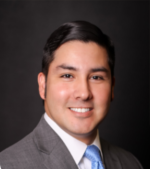
Learn the Various Documentation Requirements During the COVID-19 Pandemic.
In a press release dated April 14, 2020, the United States Department of Education (the “Department”) gave the green light for career and technical programs to donate or loan federally funded personal protective equipment (PPE) and other medical supplies to public health agencies, private nonprofit hospitals, and other licensed health providers to assist in their response to the COVID-19 pandemic. This added flexibility was in response to requests from educators looking to assist the medical professionals in their communities.
Face shields, germicide spray, gloves, gowns, masks, ventilators, wipes and 3-D printers are examples of some of the items that can be donated or loaned.
The Department will be looking for the following forms of documentation in their subsequent reviews or audits of these federally funded programs. These records must be maintained for at least three years.
- A detailed description of the equipment or supplies that were loaned or donated
- The funding source and the amount used to purchase the equipment and supplies
- The name and contact information of the recipient of the donated or loaned items
- For loaned items, the dates the items were loaned and returned to the donor
The Department also stated that it should not be assumed that any Federal funds would be made available to reimburse the donor in case of any shortages.
The full guidance on this topic from the Department can be found here.
General Documentation Requirements During the COVID-19 Pandemic
The Texas Education Agency has posted various resources on its COVID-19 resource page. You will find the common theme is documentation. For example, non-refundable expenditures can be charged to a federal grant. Documentation must be maintained for these charges and an explanation surrounding the circumstances. The other caveat is that if federal grants do assume these non-refundable costs, additional funding will not be made available to make up the loss.
Schools who are serving meals to students while schools are closed, do so under the Seamless Summer Option (SSO) or Summer Food Service Program (SFSP). Under these programs, students do not need to reside within a district’s boundaries. However, meals counts must be accurate. The schools may use their normal point of service system or a system developed specifically for these circumstances. This may include a manual counting method, which is more error prone. As such, schools should pay close attention to these counts.


